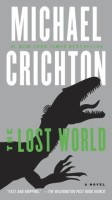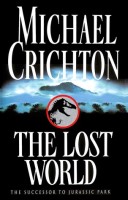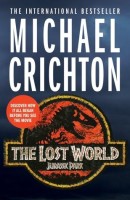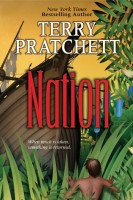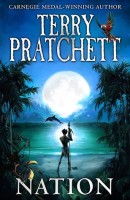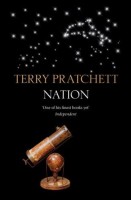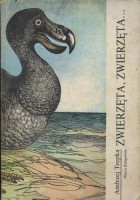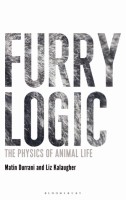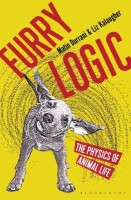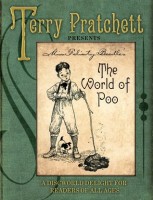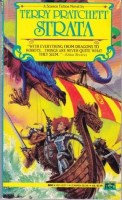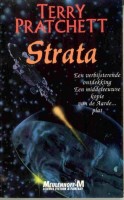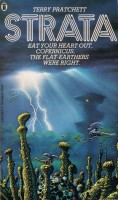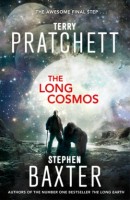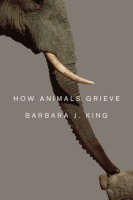 Title: How Animals Grieve
Title: How Animals Grieve
Author(s): Barbara J. King
Release year: 2013
Publisher: University of Chicago Press Book
Dlaczego w bazie: Title of this book explains what to expect. There are three smaller mentions of turtles, one enormous (5 pages!) fragment about turtles and one shorter, but also with a lot of lines.
The turtles are mentioned for the first time at the beginning:
In this book, we will visit a variety of ecosystems to discover what is known about how wild birds, dolphins, whales, monkeys, buffalo, and bears—even turtles—mourn their losses.Do Animals Fall in Love? – Illustrations
The next fragment is the longest, it is about the issues of turtle mourning (and other reptiles in general):
So far, I’ve considered only cetaceans, but questions about mourning apply to nonmammals as well. Sea turtles are reptiles, and gorgeous ones at that. In their swimming grace, they seem wholly unlike the awkward-gaited land turtles with which most of us are more familiar. On the Hawaiian island of Oahu, a spot nicknamed Turtle Beach attracts numerous endangered sea turtles. Residents and visitors a few years back came to know and love a turtle they dubbed Honey Girl. Great sadness ensued when Honey Girl was found slaughtered (cruelly, by human hands) on the beach. Grieving residents set up a memorial to Honey Girl that featured a large photograph of her. Turtlelovers flooded the memorial, but an unexpected visitor showed up too. A large male sea turtle hauled himself out of the water and made his way up the beach straight toward the photograph. There he parked himself, in the sand, head oriented toward the image of Honey Girl. Judging a turtle’s gaze as best humans can, observers concluded that he stared hard at the picture for hours.
Was the male grieving for his mate? All along, we have considered how we might come to discern a wild animal’s emotions; doesn’t this question only increase in complexity when dealing with a reptile? A turtle is, after all, many evolutionary eons away from us primates, and indeed from any mammal—it is a creature cold in the bone to our hot in the blood, as psychologist Anthony Rose puts it. When we posit that a turtle is grief-stricken (as televised news reports did in the case of Honey Girl’s presumed mate), aren’t we imposing romanticized notions upon a species that operates on instinct?
We will never know with certainty that Honey Girl’s mate mourned her on the beach, or even that he knew the photographic image depicted Honey Girl. Clues do suggest that something was going on in the male’s mind, something more than a mere attraction to novelty on the beach. His straight-arrow path to the memorial, and the quality of his stillness during his hours in front of it, are notable. Would he have behaved the same way had he encountered a sand sculpture of Honey Girl roughly the same size as the photo, or some other large novel object unrelated to Honey Girl? Short of jetting to Oahu to run a controlled experiment, I cannot say for sure. Whatever that turtle was up to at Honey Girl’s memorial, though, it’s clear to me that he was acting out of choice, behaving in a realm that stretches beyond mere survival activity.
My own experience with tortoises, and turtles, emerges from less exotic locales. I regularly encounter them on roadways as they amble across lanes of traffic, unaware of the imminent risk of becoming brightly colored bits of roadkill. Turtle rescue gives me a thrill, I admit: a quick carry from midroad to the safer verge for the smaller, amiable ones, a behind-the-shell foot-shuffle to guide the bigger, hissy ones (while avoiding their snap-rapid jaws). One summer day, after a quickly executed pullover onto a highway’s shoulder, I joined in epic battle with a magnificent snapper poised on the edge of trouble. Plucking the creature from the path of predatory vehicles, I set her (or him) down on grass, and reoriented her toward safer pastures. Back she wheeled, heading once more for the thick ribbon of cars. Perhaps seeking a watery oasis across the road, and thus set to “instinct,” she resisted all aid. Finally, carrying her aloft, I plunged through the smelly and brackish roadside ditch water (sacrificing clean sneakers and pride, as passing drivers gaped) and placed her out of harm’s way. Self-contained, methodical, stoic: that’s a turtle’s nature. “Eat, Move, Mate” would be the turtle world’s best-selling book and movie title. Wouldn’t it? So I once assumed. But, applying the questions raised by the Honey Girl anecdote, I now think it lacks rigor to assume a single “turtle nature.” Tortoises and turtles, I’m learning, not only come in diverse species and sizes, on land and on sea, but behave in ways that go beyond the instinctual.
Consider the tortoise who aimed to help a companion in distress. Here again we benefit from the craze for videotaping the actions of any animal that is cute, comic, or doing something unexpected. In this clip, a tortoise lies canted on its side, legs angled uselessly to the sky and unable to right himself (or herself). A second tortoise approaches. Tortoise B pushes his face right up near A’s body, perhaps to assess the situation, then begins gently to push on A. Nothing much happens at first, but B continues to labor with purpose and precision. Once A begins to tilt back toward the ground, he wheels his legs, thus adding his own force to B’s. When A regains his quadruped stance, the pair moves off together, slowly. With a video of unknown origin like this one, it’s possible that viewers, including me, have been suckered. Could Tortoise A have been placed on his side by a person eager to offer a Dramaic scene to a YouTube-addicted world? And what about ethics? Shouldn’t the videographer have helped Tortoise A early on, even before Tortoise B stepped in? Even though the circumstances surrounding this video aren’t clear, the inventive—and successful—problem-solving behaviors shown by Tortoise B are striking.
As I remarked in writing about goats and chickens in the prologue, what we notice in the animals around us is set, to some significant degree, by our expectations. We may not even think to look for mourning when a turtle lose a partner. We may not think to look at turtle behavior very closely at all. Yet to be ruled by our assumptions leads to missed opportunities, a lesson brought home by Verlyn Klinkenborg’s fictional tortoise in his novel Timothy, or Notes of an Abject Reptile. Timothy was born among the tangy salt smells of Turkey and transported to England on a ship. What Klinkenborg reveals, through Timothy, is that we humans don’t understand other animals nearly as well as we like to think.
Timothy offers an ethnography of sorts, a view of the Homo sapiens who weathered the eighteenth-century English winter in ways that are peculiar to Timothy’s sensibility: “Humans of Selborne wake all winter. Above ground, eating and eating. . . . Huddled close to their fires. Fanning the ashes. Guarding the spark. Never a lasting silence for them. Never more than a one-night rest.” Reflecting further on the human condition, Timothy finds little to envy: “Barely able to witness what is not human. Always conjuring with the separateness of their species. Separate creation. Special dominion. Embarrassed by signs of their animal nature.” More than anything, Timothy is flummoxed by humans’ drive to measure, categorize, and rigidly label the natural world, all the while puffed up with the resolute certainty of their understanding. All through his notes and descriptions, the human Gilbert White (a real-life English naturalist of the eighteenth century who wrote about tortoises) refers to Timothy as “he.” White has never seen any evidence to suggest that Timothy is anything other than male, so he leaps to a conclusion. “No eggs buried under the monk’s rhubarb,” Timothy reflects, “or hidden at the foot of the muscadine vine. None laid on the grass-plot. No preening, no dalliance. . . . And so Mr. White has always supposed that I am male.”
As Klinkenborg’s narrative reveals, Timothy isn’t male. She is full of surprises, both about her sex and about her ways of living in the world. I am drawn to this novel because it mirrors perfectly what we are coming to grasp more acutely in animal-behavior science more clearly than ever before: We must look at animals’ actions with fresh eyes and thoughts unconstrained by expectations.
When in 1994 animal behaviorist Gordon Burghardt visited the National Zoological Park in Washington, DC, he stopped at the enclosure of a Nile soft-shelled turtle named Pigface. Enclosed alone, Pigface had by that time lived at the zoo for fifty years. (Reading that statistic, I had to stop for a moment and let it sink in: five decades captive.) Burghardt had looked at Pigface before, but this time he did a double take: Pigface was playing with a basketball. The turtle swam through the water, batting the ball with his (or her) nose and chasing it with great energy. This snapshot of turtle play invited Burghardt to think in a new way about the behavioral repertoire of reptiles.
In the twenty-first century, we tend to veer between two poles in thinking about creatures of Pigface’s ilk. We may conclude that the male Hawaiian sea turtle was mourning his mate, Honey Girl, or we may look at turtles and tortoises much like the fictional Gilbert White does, boxed in by assumptions that their lives are circumscribed by the “eat, move, mate” circuit. I don’t think that the Honey Girl anecdote proves the existence of turtle grief, but like Pigface and his play behavior did for Gordon Burghardt, it should shake us into a realization: We won’t have a hope of finding turtle grief until we look for it.Do Animals Fall in Love? – Illustrations
The second larger (but much smaller that first) fragment is an introduction to the history of Owen and Mzee and their future (from the perspective of today we know that the turtle and the hippo were separated, as Owen was starting to pose a threat to Mzee as he grew older):
The friendship between the hippo Owen and the tortoise Mzee is, on the other hand, remarkable for its constancy. Orphaned during the terrible Christmas 2004 tsunami, Owen was brought to the Kenyan animal park where 130-year-old Mzee lived. Although no Dramaic spark flared up between the two, the pair, led by the younger, rambunctious Owen, gradually developed a shared affection. Before long, each followed the other around and an idiosyncratic communication system emerged. Mzee nips Owen’s tail to propel Owen along on a walk. Owen nudges Mzee’s feet when it’s his turn to initiate: he pushes on Mzee’s back right foot when he wants Mzee to steer right and does the opposite for going left. What will happen when Owen loses Mzee, or Mzee loses Owen? The price of an enduring friendship is often survivor’s grief, and we know that grief does not respect species’ boundaries.Do Animals Fall in Love? – Illustrations
The other two fragments are shorter and are a reference to the earlier pieces of the book, the ones we cited above:
The story of Peaches and Jezebel shows that, even when animals have their own kind around them (unlike Owen and Mzee), they may opt for a cross-species friendship.Do Animals Fall in Love? – Illustrations
Not all of my examples from the wild convincingly meet the strict definitional criteria. With the male sea turtle in Hawaii who had lost Honey Girl, his presumed mate, the bison in Yellowstone National Park who inspected their companion’s carcass, and the corpse-carrying monkey mothers who seem unaffected emotionally by their burden, the evidence is suggestive of grief to varying degrees, but not conclusive.Do Animals Fall in Love? – Illustrations
Author: XYuriTT
 Title: The Lost World
Title: The Lost World